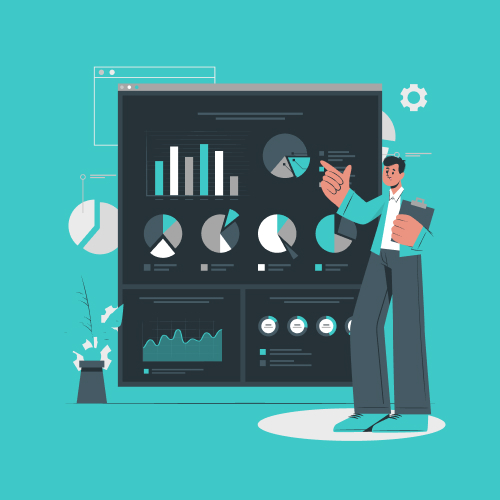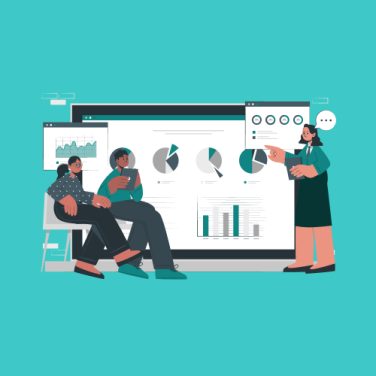Human resources teams rely on HR analytics tools to collect, process, and analyse workforce data throughout the employee lifecycle. These solutions aggregate information from recruiting portals, performance appraisals, attendance records, and exit interviews into a unified data model.
Early systems offered basic reporting on headcount and turnover, but modern platforms integrate payroll and HRMS data to deliver advanced HR analytics software capabilities. Organisations can now leverage predictive and prescriptive analytics to anticipate challenges and optimise workforce planning.
The evolution from static dashboards to AI-driven forecasting has redefined HR metrics analytics. Simple spreadsheets have given way to real-time dashboards with drill-down reports and interactive visualisations. As a result, HR leaders can monitor key performance indicators—such as cost per hire, absenteeism rates, and diversity indices—in real time and spot trends before they escalate.
Adopting HR analytics tools drives strategic workforce planning, enhances employee experience, and reduces operating costs. By forecasting turnover risks and identifying high-potential talent, HR teams align headcount decisions with business goals. Data-driven insights also improve recruitment efficiency and support diversity and inclusion initiatives.
The market landscape features integrated suites that combine core HRMS functions, payroll processing, and embedded analytics. Vendors now embed AI modules for predictive modelling of attrition, performance forecasting, and skills-gap analysis. These all-in-one platforms replace point solutions, minimise data silos, and improve data integrity.
MiHCM delivers an end-to-end platform that maps transactional HR and payroll operations to comprehensive analytics, empowering HR and line managers to make confident, data-informed decisions at every stage of the talent lifecycle. The integrated approach ensures a reliable, single source of truth for HR metrics analytics.
Key HR metrics to track

Tracking the right HR metrics analytics is critical for understanding workforce dynamics and guiding strategic decisions. The following table outlines core metrics every organisation should monitor:
| Metric | Description |
|---|---|
| Turnover Rate | Percentage of voluntary and involuntary exits over a period to assess retention health. |
| Time-to-Hire | Average number of days from job posting to accepted offer, indicating recruitment efficiency. |
| Cost per Hire | Total recruitment costs divided by number of hires to evaluate budget impact. |
| Absenteeism Rate | Number of unplanned absence days divided by total workdays, revealing attendance trends. |
| Employee Performance Score | Aggregated appraisal ratings to identify high-performers and areas for development. |
| Diversity & Inclusion Index | Ratio metrics for gender, age, and ethnicity distribution to ensure workforce balance. |
| Overtime Hours | Total overtime logged compared to standard hours to monitor workload and capacity. |
| Productivity Metrics | Output measures per employee or team, such as sales per hour or tasks completed. |
Monitoring turnover rate helps HR determine whether retention strategies need reinforcement. A high turnover rate may signal cultural or compensation issues. Time-to-hire and cost per hire reveal how well recruiting processes align with budget constraints and talent demand. A rising absenteeism rate can point to engagement problems or external stressors that require early intervention.
Cost per hire includes advertising costs, agency fees, candidate travel expenses, and hiring manager time. Calculating this metric accurately requires integration between recruitment platforms and payroll systems. By tagging expenses, HR teams can allocate budget more effectively and optimise sourcing channels.
Employee performance scores, when aggregated over time, highlight training and coaching opportunities. Organisations can design targeted development programs for low-performers and recognise top talent. The diversity and inclusion index ensures compliance with company goals and regulatory standards, supporting a culture of equity and innovation.
Tracking a detailed diversity and inclusion index involves analysing multiple dimensions. Beyond gender and ethnicity, organisations may track veteran status, disability representation, and LGBTQ+ inclusion. Benchmarking these values against industry standards helps set realistic targets and measure progress. Visualising diversity metrics in dashboards increases transparency and supports accountability across the business.
Absenteeism analysis can be refined by categorising leave types—sick, personal, unpaid, and scheduled. Seasonal trends, local regulations, and health outbreaks can influence patterns. Advanced HR analytics software can flag anomalies and send automated alerts to managers before staffing gaps occur.
Performance data becomes more actionable when combined with learning and development records. HR analytics tools can track training completion rates and correlate them with performance improvements. This integrated approach supports targeted upskilling and demonstrates the ROI of learning programs.
How HR analytics software drives strategic decision-making
Modern HR analytics software unifies data from HRMS, payroll, performance management systems, and external sources into a single data model. This unified view eliminates data silos and standardises metrics.
HR teams can combine headcount, compensation, time and attendance, and learning data to form comprehensive insights into workforce behaviour. A robust data foundation ensures that analytics and reports are accurate, consistent, and aligned with business definitions.
Predictive modelling leverages historical and real-time data to forecast employee outcomes. Algorithms assess factors such as tenure, performance ratings, and engagement survey scores to anticipate turnover and absenteeism patterns. By identifying at-risk employees, HR managers can deploy targeted retention programs long before issues escalate. Predictive forecasts also highlight potential skills gaps, enabling proactive reskilling and succession planning.
Scenario analysis tools let leaders simulate workforce outcomes under different assumptions. HR and finance teams can model headcount cost projections, recruitment ramp-ups, and diversity initiatives to evaluate budget impact. These what-if simulations provide evidence-based guidance when preparing annual plans or responding to market shifts.
Executive dashboards present tailored visualisations for C-suite and line managers. Customisable widgets display key metrics, trend lines, and alert indicators on a single screen. Drill-down capabilities allow users to explore data by department, location, or cohort, so decisions are grounded in granular details rather than high-level summaries.
ROI tracking ties HR investments to business performance. By mapping workforce metrics—like revenue per employee, cost savings from reduced turnover, and productivity improvements—back to financial KPIs, organisations quantify the value of HR analytics tools. This end-to-end linkage demonstrates how HR data visualisation and predictive insights drive tangible returns on HR initiatives.
Scenario planning also supports crisis management, allowing HR to project staffing scenarios during economic downturns or rapid growth periods. This agility equips executives to align headcount strategies with market volatility and make informed strategic leadership choices.
Top features of modern HR analytics tools

The latest HR analytics tools include features designed to streamline data analysis and drive smarter talent decisions. Key capabilities include:
- Real-time Dashboards and Drill-Down Reports: Interactive dashboards enable HR teams to monitor workforce metrics in real time. With customisable widgets, users can drill down into data by department, location, or demographic segment. MiHCM’s Analytics module supports this functionality, making complex data discoverable at a glance. Benefit: Make data-powered decisions about workforce demographics and performance.
- Predictive Forecasts for Turnover and Performance: Advanced algorithms predict which employees are at risk of leaving or underperforming. By analysing tenure, engagement scores, and performance history, organisations can proactively retain talent. MiHCM Data & AI delivers these predictive models. Benefits: Forecast turnover and absenteeism to proactively mitigate risks; Predict workforce performance.
- Customisable Metrics and KPI Libraries: Prebuilt metric libraries cover recruitment, performance, diversity, and cost measures, while allowing new KPIs. HR can align analytics with strategic goals by selecting relevant indicators. MiHCM’s Analytics lets teams adapt metric definitions and thresholds. Benefit: Streamline recruitment processes with analytics-driven insights.
- Interactive Data Visualisation and Storytelling: Visual tools such as heatmaps, trend lines, and scatterplots bring HR data visualisation to life. Narrative features allow annotations and guided presentations for stakeholders. SmartAssist can generate AI-driven narratives that summarise insights. Benefit: Enhance workforce productivity through timesheet and attendance analysis; Visualise leave patterns.
- Automated Alerts for At-Risk Employees: Configurable alerts notify managers when employees exceed absence thresholds or show early signs of disengagement. These automated triggers help HR teams intervene before issues escalate. MiHCM Data & AI tags risk factors. Benefit: Build a diverse and inclusive workforce by monitoring key diversity metrics; Make data-powered decisions about workforce demographics.
- AI-Driven Recommendations: An embedded chatbot analyses HR metrics and provides actionable suggestions, such as targeted training programmes or recruitment adjustments. It uses natural language interfaces to answer HR queries in real time. Benefit: Forecast turnover and absenteeism to proactively mitigate risks; Predict workforce performance; Streamline recruitment processes. These features make HR analytics software central to modern talent management.
Best Practices for HR data visualisation
Effective HR data visualisation turns complex datasets into clear, actionable insights. Following best practices ensures managers interpret metrics accurately and engage stakeholders with compelling visuals.
- Choose the Right Chart Types: Use bar charts for categorical comparisons, line charts for trends over time, and heatmaps to expose patterns in absence or performance data. Avoid overcrowded visuals by limiting series per chart.
- Maintain Data Integrity: Source data must be clean and consistent. Standardise definitions for metrics such as turnover rate or cost per hire across systems. Automated data validation rules in HR analytics tools help prevent errors in dashboards.
- Interactive Elements: Add filters, drill-down capabilities, and tooltips to let users explore details on demand. Interactive drilldowns in platforms like MiHCM’s Analytics module enable deep dives into department-level or demographic subsets.
- Mobile-First Dashboards: Design visuals that render effectively on tablets and smartphones. Responsive HR analytics software ensures leaders can access key performance indicators anywhere, supporting fast decisions on the go.
- Storytelling with Data: Embed narrative elements, such as annotations and callouts, to guide viewers through the data story. Highlight critical insights with coloured markers or narrative boxes. Tools like SmartAssist can auto-generate context for charts.
Consistent colour palettes and font choices foster a cohesive user experience. Ensure accessibility by using high-contrast colour schemes and providing alt text for charts in exported reports.
Use consistent labelling and units across all charts to prevent misinterpretation. Incorporate threshold lines and reference markers to highlight target values and performance boundaries.
Train stakeholders on interpreting visual cues and encourage feedback to refine dashboards over time. Archive outdated charts and rotate visuals to match HR initiatives. A version history helps teams track changes and ensures audit readiness for compliance reviews.
Implementing HR metrics analytics in your organisation

Rolling out HR metrics analytics demands a structured approach to ensure alignment with business goals and data quality standards. Below are practical steps for successful implementation:
- Define clear objectives and KPIs: Start by identifying business challenges and linking them to measurable HR outcomes. Select KPIs—such as turnover rate, time-to-hire, and diversity indices—that directly support strategic goals.
- Audit and cleanse data sources: Conduct a thorough review of existing HRMS, payroll, and recruitment systems. Standardise data formats, resolve duplicates, and fill gaps to establish a single source of truth.
- Phased rollout: Launch with core metrics to demonstrate quick wins. Once teams gain confidence, expand analytics to include predictive and prescriptive use cases, such as forecasting absenteeism or recommending training plans.
- Change management and training: Equip HR and management teams with the skills to navigate HR analytics software dashboards. Offer hands-on workshops and create reference guides to interpret metrics effectively.
- Governance and security: Define roles and permissions to protect sensitive employee data. Implement compliance guardrails—such as role-based access control and audit logs—to meet regulatory requirements.
Integrate HR analytics software with existing enterprise systems, such as ERP and customer relationship management platforms, to enrich workforce data with operational and financial metrics. Automation of data pipelines reduces manual effort and ensures timely updates.
Set up data warehouse or lake architecture to centralise data from multiple sources, enabling scalable analytics. Leverage cloud-based solutions for flexible infrastructure and pay-as-you-go models, reducing upfront investments.
Establish a governance committee with HR, IT, and finance to align priorities. Review analytics performance quarterly against KPIs.
Continuously monitor adoption rates and user feedback to refine dashboards and processes. Integrate HR data visualisation in regular review meetings, ensuring insights translate into action plans. By following these best practices, organisations can build trust in HR metrics analytics and drive a culture of evidence-based decision-making.
Embracing data-driven HR

HR analytics tools are fundamental for modern workforce planning and performance management. By tracking core metrics—such as turnover rate, time-to-hire, absenteeism, and diversity indices—and adopting predictive modelling, organisations gain foresight into talent risks and opportunities. Interactive HR data visualisation via real-time dashboards and drill-down reports keeps executives and managers informed with actionable insights.
MiHCM’s integrated suite accelerates the HR metrics analytics journey, guiding HR teams toward data-powered decisions.
Begin your transformation by defining clear KPIs, ensuring data quality, and training stakeholders on HR analytics software. Embrace a structured rollout to embed analytics into daily workflows. Explore MiHCM’s solutions today to unlock the full potential of your workforce data and drive strategic growth.



